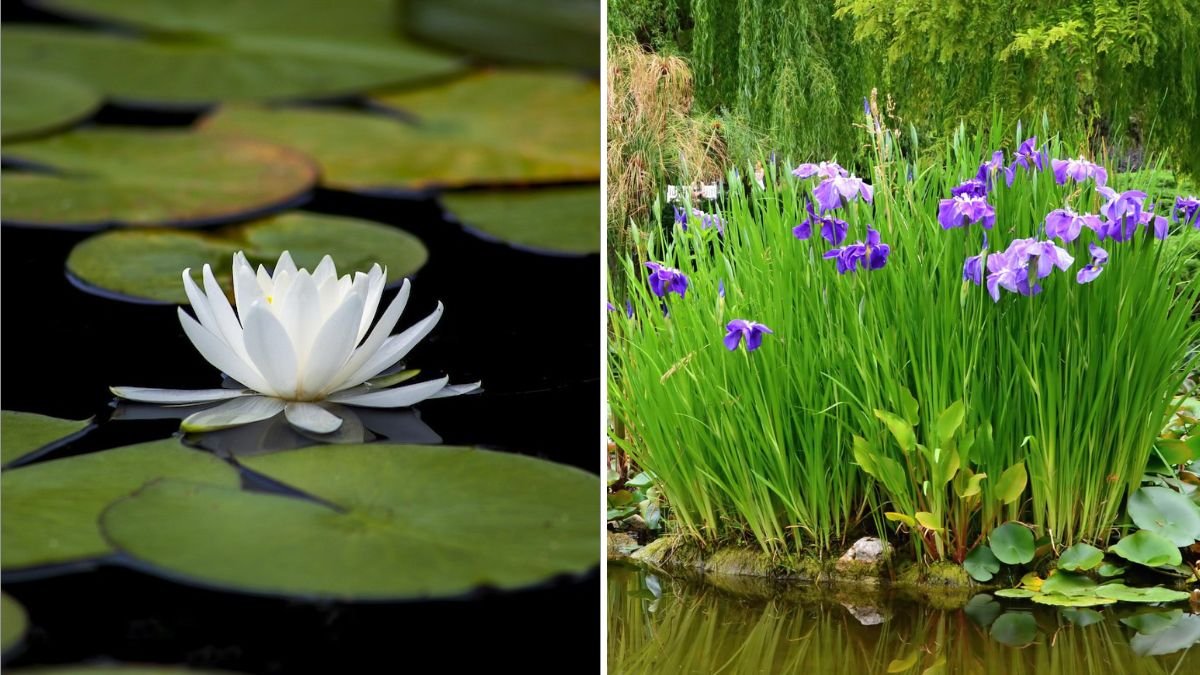A garden pond instantly adds serenity, texture, and wildlife to your outdoor space. The sound of trickling water and the sight of shimmering reflections create a peaceful focal point—but what truly completes the look is the lush, vibrant greenery surrounding it. The right plants can turn a simple pond into a natural paradise, enhancing its beauty while helping maintain water quality and habitat balance.
Not every plant can handle the moist, sometimes boggy conditions around a pond’s edge. Fortunately, many species not only tolerate this environment but flourish in it. Here are six plants that thrive beautifully around garden ponds—and how to care for them.
1. Hostas (Hosta spp.) – The Shade-Loving Foliage Star
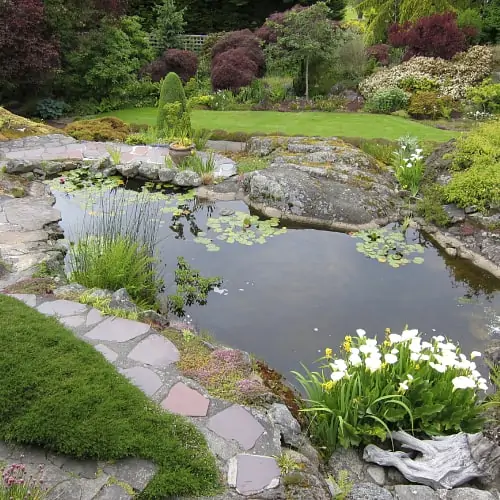
If your pond is partially shaded, hostas are a perfect match. Known for their broad, textured leaves in shades of green, blue, and variegated white or gold, hostas bring structure and lushness to pond edges. They thrive in moist, well-drained soil and can tolerate light sun, but they truly excel in dappled shade.
Why They Work Around Ponds:
Hostas love consistent moisture, making pondside locations ideal. Their large leaves also create a beautiful contrast against water and stones, softening hard edges.
Care Tips:
- Water regularly—especially during dry spells.
- Add compost or mulch around the base to retain soil moisture.
- Divide every 3–4 years to prevent overcrowding.
- Protect from snails and slugs, which can damage leaves.
Design Idea:
Plant multiple hosta varieties together—mix blue-gray ‘Halcyon’ with lime-green ‘Sum and Substance’—for a layered look that pops against reflective water.
2. Japanese Iris (Iris ensata) – The Elegant Water Lover
Few plants rival the grace of the Japanese iris. These tall, elegant perennials bloom in late spring to early summer, producing large, ruffled flowers in striking shades of violet, white, and blue. They’re a favorite for adding a touch of formality to natural water gardens.
Why They Work Around Ponds:
Japanese irises thrive in wet soil, often tolerating conditions just shy of standing water. Their upright foliage and dramatic flowers complement the vertical lines of grasses and reeds.
Care Tips:
- Plant rhizomes just below the soil surface near pond edges.
- Keep soil consistently moist, especially during the growing season.
- Cut back foliage in late fall to tidy the space.
- Fertilize lightly in spring for better blooms.
Design Idea:
Combine Japanese irises with low-growing plants like creeping jenny for a layered, water’s-edge composition that looks lush and intentional.
3. Marsh Marigold (Caltha palustris) – The Early Bloomer
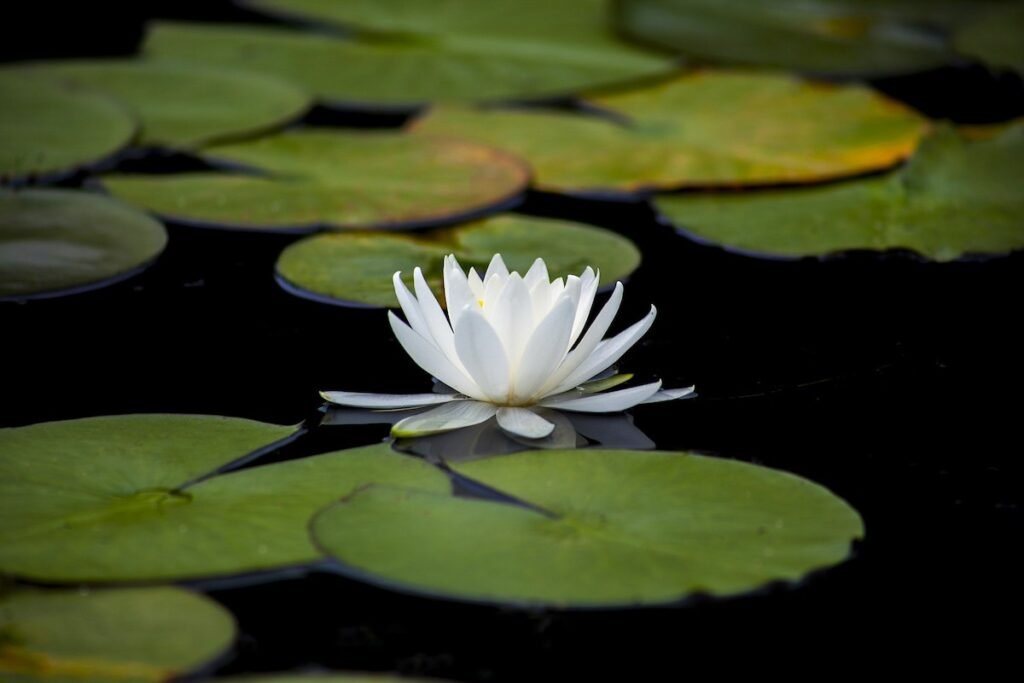
This cheerful perennial brings vibrant golden-yellow blooms to the pondside early in spring—often before many other plants wake up. Marsh marigold thrives in wet or boggy conditions and adds a burst of color when your pond landscape most needs it.
Why They Work Around Ponds:
They naturally grow in marshy areas, so pond edges provide their ideal habitat. The bright flowers attract pollinators like bees and butterflies early in the season.
Care Tips:
- Plant in full sun to partial shade.
- Ensure soil stays consistently moist—plant near shallow pond edges if possible.
- Remove spent flowers to encourage continuous blooming.
- Divide clumps every few years to maintain vigor.
Design Idea:
Use marsh marigolds as a natural border between water and land, letting them form soft, cheerful drifts that frame the pond beautifully.
4. Creeping Jenny (Lysimachia nummularia) – The Low-Growing Carpet
Creeping jenny is a vigorous groundcover that cascades gracefully over rocks and pond edges. Its round, chartreuse leaves and trailing habit make it perfect for softening the edges of hardscape or filling in gaps between stones.
Why They Work Around Ponds:
They tolerate damp soil and occasional flooding, making them one of the best pond-side fillers. They also prevent soil erosion along the banks.
Care Tips:
- Plant in full sun for bright yellow-green foliage; in shade, leaves appear deeper green.
- Keep the soil moist but well-drained.
- Trim regularly to prevent unwanted spreading.
- Works well in containers near water features, too.
Design Idea:
Let creeping jenny spill over a stone retaining wall into the pond—it creates a stunning visual that looks both natural and artfully designed.
5. Pickerel Rush (Pontederia cordata) – The Pollinator Magnet
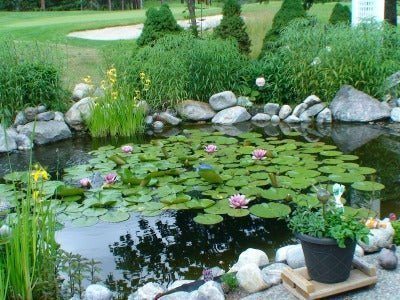
For ponds with shallow margins, pickerel rush is a top choice. This aquatic perennial grows 2–4 feet tall and produces spikes of violet-blue flowers from mid-summer to early fall. Its lush green leaves and vertical growth create depth and texture in the landscape.
Why They Work Around Ponds:
Pickerel rush grows directly in shallow water or wet soil, helping stabilize pond edges while providing food and shelter for pollinators, frogs, and dragonflies.
Care Tips:
- Plant in water up to 6 inches deep or in very moist soil.
- Prefers full sun but tolerates partial shade.
- Cut back dead foliage in late fall or early spring.
- Fertilize sparingly with aquatic plant food for optimal flowering.
Design Idea:
Pair pickerel rush with water lilies or irises for a layered, natural look that attracts both wildlife and admiring eyes.
6. Papyrus (Cyperus papyrus) – The Exotic Accent
For a touch of drama, add papyrus. With its tall, slender stalks topped by umbrella-like clusters of fine green filaments, this tropical plant lends an exotic, architectural feel to ponds. In warmer climates, it’s a perennial; in cooler regions, it can be grown as an annual or in containers.
Why They Work Around Ponds:
Papyrus loves constant moisture and even standing water. It’s ideal for planting at pond edges or in submerged pots to control its growth.
Care Tips:
- Needs full sun to thrive.
- Keep soil or water consistently wet—never allow to dry out.
- In cold climates, overwinter indoors or treat as an annual.
- Remove old stems to maintain tidy growth.
Design Idea:
Use papyrus as a tall backdrop behind low-growing marginal plants like creeping jenny or water forget-me-nots—it creates instant depth and visual drama.
Bonus Tip: Balance Aesthetics with Function
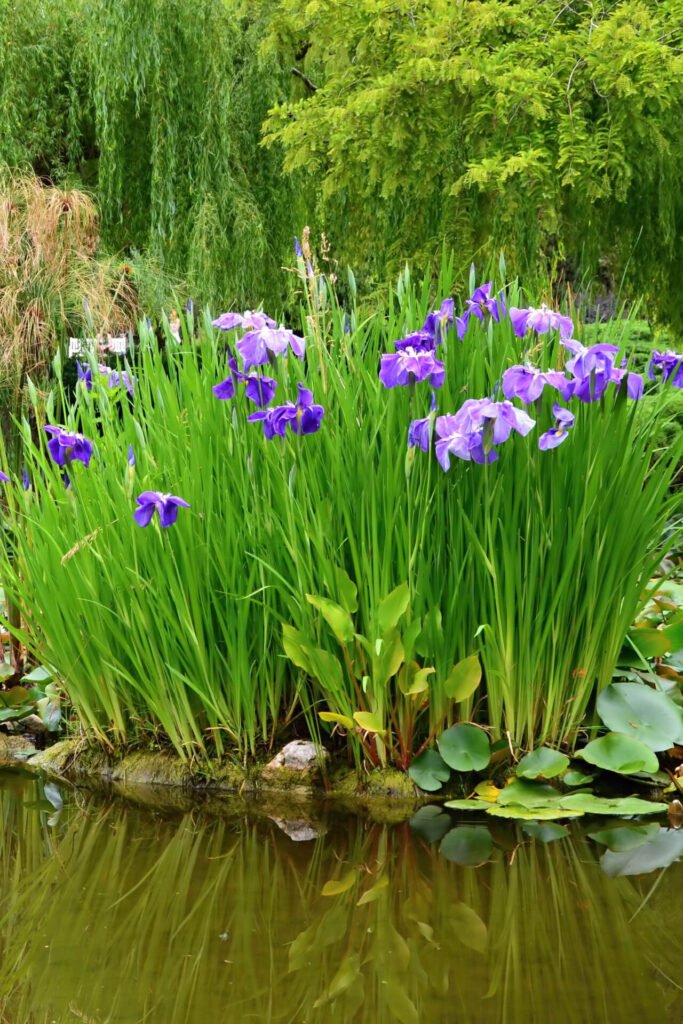
When choosing plants for your pond area, consider both appearance and ecology. A mix of marginal, bog, and aquatic plants will help:
- Filter water naturally, reducing algae growth.
- Stabilize soil to prevent erosion.
- Provide habitat for beneficial insects, frogs, and fish.
- Add texture and color year-round.
Group plants in clusters of odd numbers (three, five, or seven) for a natural look, and repeat colors or textures to maintain harmony throughout the space.
Final Thoughts
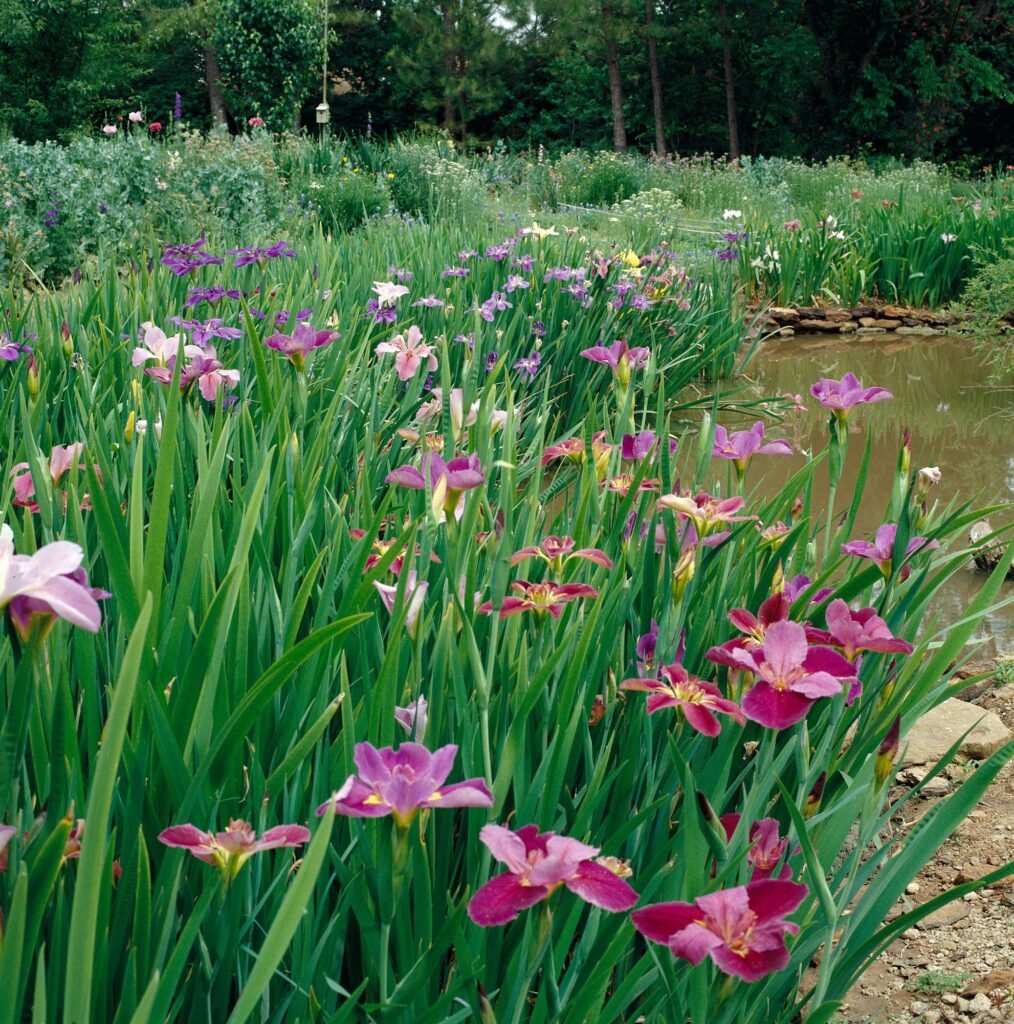
A well-designed pond garden is more than a visual treat—it’s a living ecosystem. By planting species that thrive in moist conditions, you’ll ensure your pond stays healthy, balanced, and bursting with life. From the lush foliage of hostas to the striking blooms of Japanese irises, these six plants bring color, texture, and tranquility to your water’s edge.
With thoughtful planning, your garden pond will transform into a peaceful retreat—where nature, water, and design blend seamlessly into a breathtaking outdoor sanctuary.
